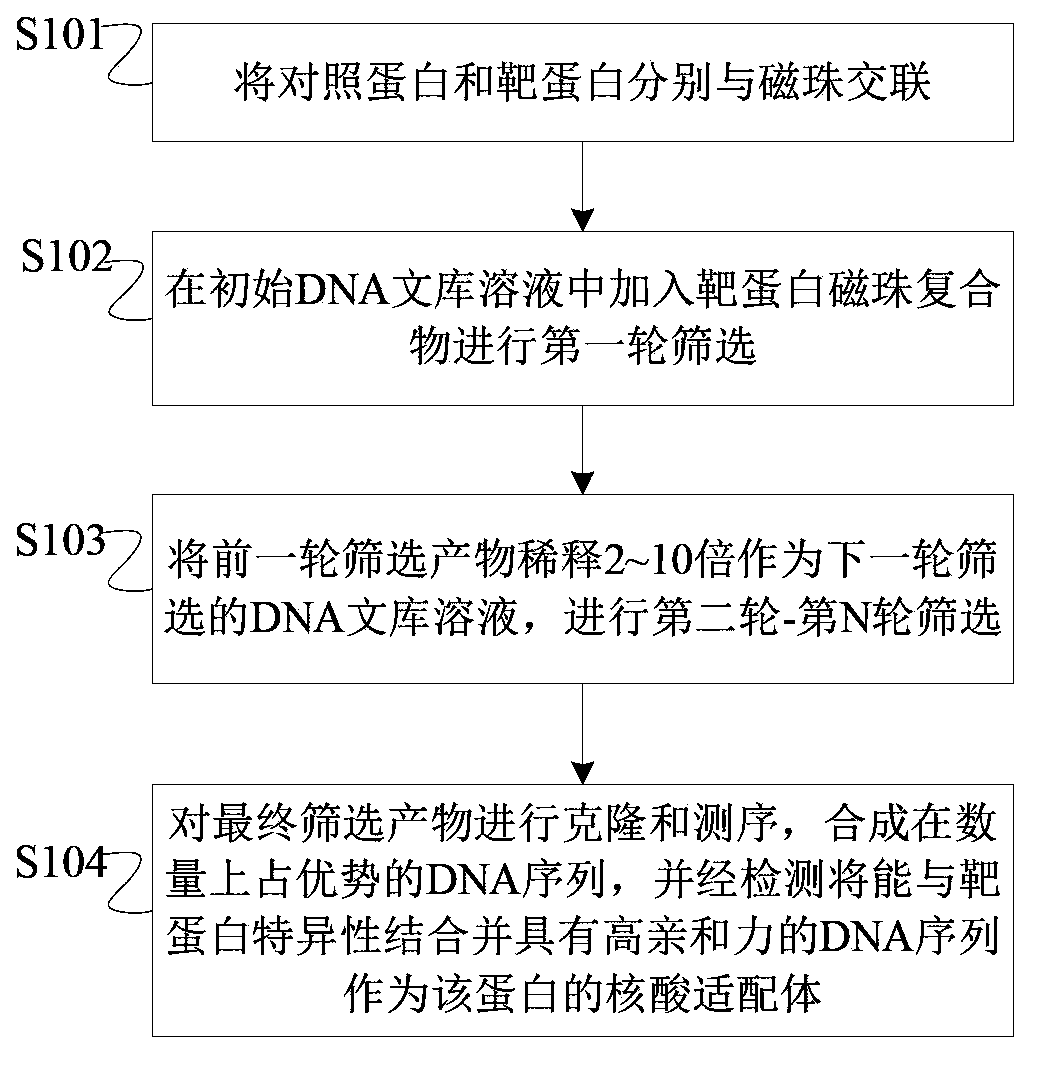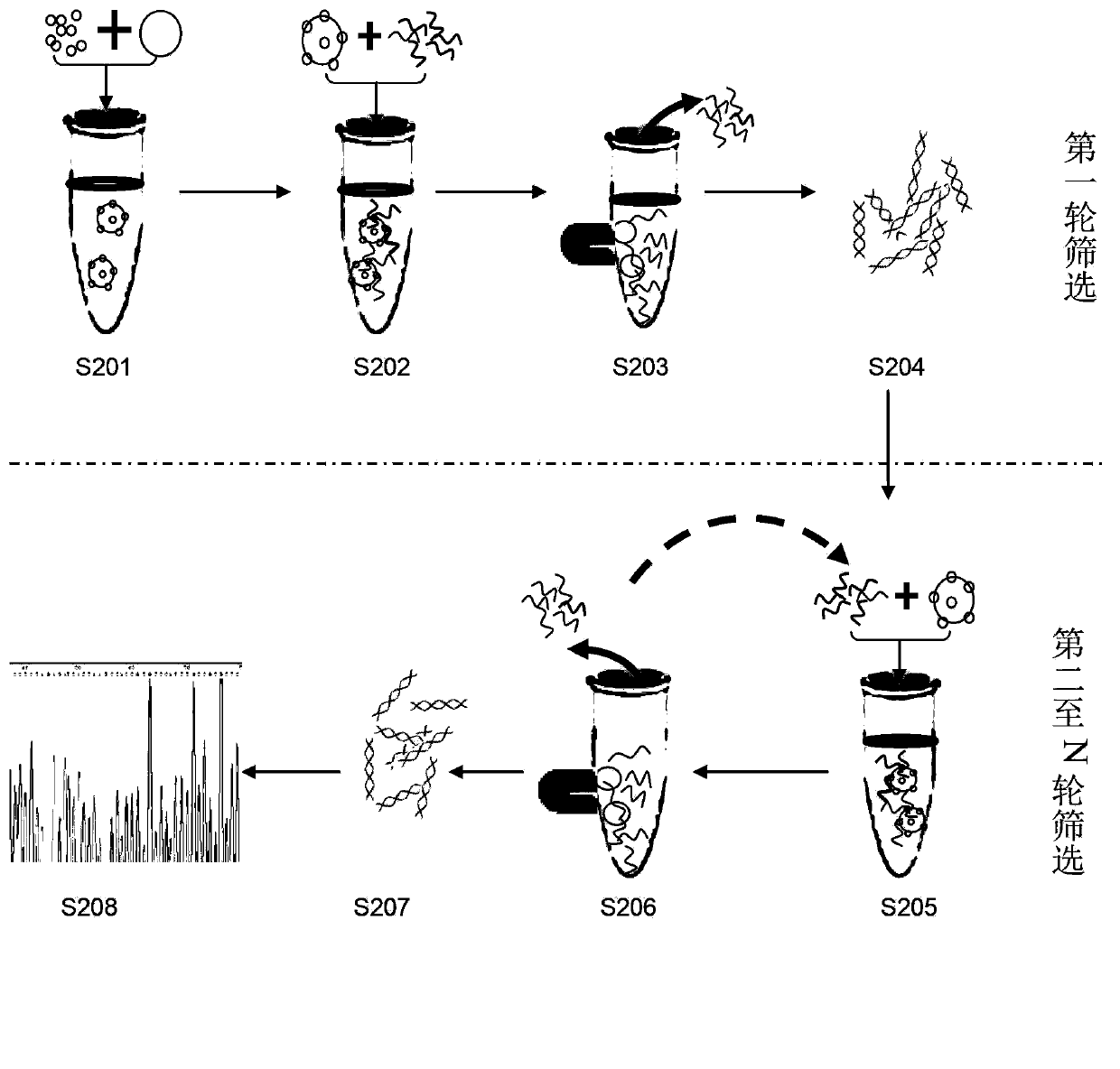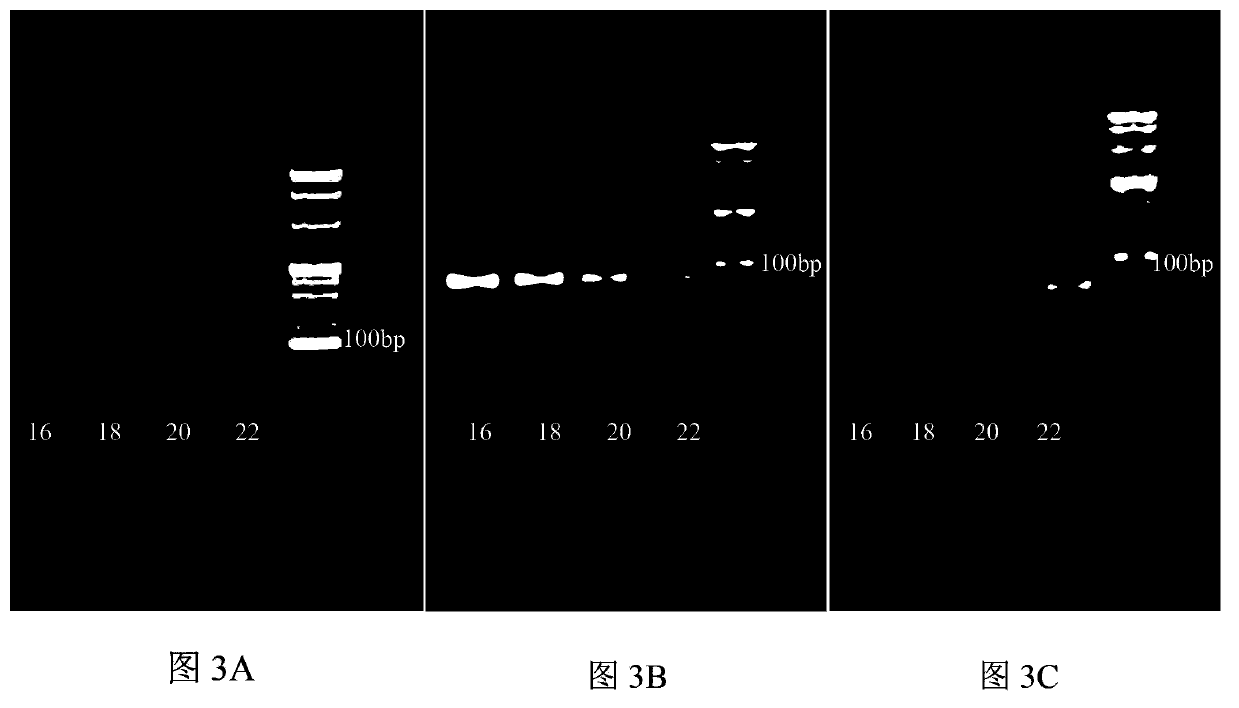Decreasing DNA library concentration based aptamer screening method and aptamer
A DNA library and nucleic acid aptamer technology, applied in the field of molecular biology, can solve the problems of low screening success rate and complicated screening process, and achieve the effect of simplifying the screening process, increasing the success rate, and shortening the screening time
- Summary
- Abstract
- Description
- Claims
- Application Information
AI Technical Summary
Problems solved by technology
Method used
Image
Examples
specific Embodiment approach
[0042] see figure 2 , is a process schematic diagram of a nucleic acid aptamer screening method based on decreasing concentration of a DNA library according to a preferred embodiment of the present invention. In this embodiment, the target protein is Endoglin, and the control protein is bovine serum albumin (BSA). The specific implementation is as follows:
[0043] (1) Library and primer pretreatment steps
[0044] Use sterile water to configure the upstream and downstream primers to a concentration of 50uM, and dissolve the DNA library to a 50uM solution with PBS, and store them at 20°C. A PCR solution system with a final library concentration of 5nM was configured, a temperature gradient PCR was set to optimize the amplification temperature of the DNA library, and the temperature with the most obvious specific amplification and no impurity bands was selected as the optimum temperature for PCR amplification in the subsequent steps.
[0045] (2) Protein magnetic beads cros...
PUM
 Login to View More
Login to View More Abstract
Description
Claims
Application Information
 Login to View More
Login to View More - R&D
- Intellectual Property
- Life Sciences
- Materials
- Tech Scout
- Unparalleled Data Quality
- Higher Quality Content
- 60% Fewer Hallucinations
Browse by: Latest US Patents, China's latest patents, Technical Efficacy Thesaurus, Application Domain, Technology Topic, Popular Technical Reports.
© 2025 PatSnap. All rights reserved.Legal|Privacy policy|Modern Slavery Act Transparency Statement|Sitemap|About US| Contact US: help@patsnap.com



